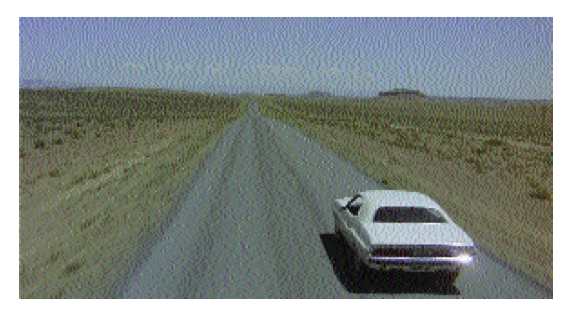I drove a car across the country once. It took three weeks and was financed by a rock magazine. Two years after the trip, a handful of people from California with exceptionally comfortable office chairs considered making a movie out of my experience. It was a very confusing process. Enthusiastic strangers with German eyeglasses kept asking me how I imagined this film would look, which I found difficult to elucidate; I assumed it would look like the video for Tom Cochrane’s “Life Is a Highway,” partially because of the lyrical content but mostly because I (sort of) looked Canadian before I grew a beard. That was not the answer they were anticipating. I was given a strong impression they were hoping I would say it would be a lot like Trainspotting, although maybe they were just trying to figure out if I could put them in contact with local drug dealers. They also wanted me to sign a 780-page contract that would give time control over my “life rights,” which meant they would have been able to make me an ancillary character in You, Me and Dupree.
My theoretical Road Movie would not have been interesting and does not exist, although those two points are not necessarily related. I have no doubt that it would have followed the conventional Road Movie trajectory, which has remained intact since before The Wizard of Oz. This trajectory is as follows:
- A character experiences abstract loss and attempts an exodus from normal life.
- The character reinvents his or her self-identity while traveling.
- Along the way, the character encounters iconic individuals who (usually) illustrate authenticity and desolation.
- Upon the recognition of seemingly self-evident realizations, the character desires to return to the point of origin.
I assume the hypothetical Road Movie I was not involved with would have been built on the most elementary of Road Movie clichés: where you’re going doesn’t matter as much as how you get there. But that philosophy raises at least three questions, some of which are equally cliché but all of which are hard to answer: What is a Road Movie, really? Why do so many directors (from so many different eras) long to make them? And what makes movement any more inherently interesting than—or even all that different from—staying in one place?
*
The defining domestic road narrative is Jack Kerouac’s 1957 novel On the Road, a novel that readers either take much too seriously (at least in the opinion of dead author Truman Capote, who didn’t even classify the prose as writing) or not seriously enough (if you happen to be non-dead author...
You have reached your article limit
Sign up for a digital subscription and continue reading all new issues, plus our entire archives, for just $1.50/month.
Already a subscriber? Sign in





